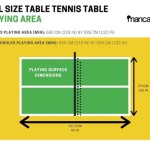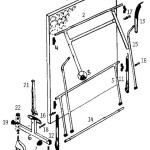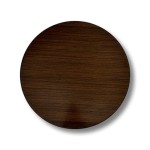The Height of a Table in Millimeters
The height of a table can vary significantly depending on its intended use and design. However, there are general standards and guidelines that are often followed, especially in the realm of furniture for specific purposes. This article delves into the typical height of different types of tables in millimeters, offering insights into the factors that influence their dimensions.
Standard Table Heights
The standard height of a dining table is typically 750 millimeters (30 inches). This height allows for comfortable seating and dining. It is generally considered the optimal height for reaching food and drink comfortably while seated. However, this standard can fluctuate slightly based on the chair height used with the table.
Coffee tables tend to be lower than dining tables, with a standard height of around 450-500 millimeters (18-20 inches). This lower height allows for easier access to drinks and snacks while seated on a sofa or armchair. The height of a coffee table should be proportionate to the height of the sofa it accompanies, facilitating a comfortable seating arrangement and ease of interaction.
End tables, which are used for placing lamps, books, and other items, typically range in height from 600-700 millimeters (24-28 inches). This height allows for convenient access to items on the table while seated. However, the height of an end table should be coordinated with the height of the sofa or armchair beside which it is placed, aiming for a visually pleasing and functionally supportive arrangement.
Factors Influencing Table Height
Several factors can influence the height of a table, including its intended use, the height of the users, and the overall design aesthetic. For example, a kitchen island used for food preparation may be taller than a standard dining table to accommodate standing work comfortably. On the other hand, a low coffee table designed for a contemporary living room might deviate from the standard height to create a more relaxed and informal atmosphere.
The height of the users is also an important factor to consider when selecting or designing a table. A taller person may prefer a table with a greater height, while a shorter person may find a lower table more comfortable. These considerations become particularly relevant in workplaces, where ergonomics and user comfort are prioritized.
Table Height in Different Settings
The height of a table can vary significantly based on its intended environment. For example, a laboratory table might be significantly taller than a standard dining table to accommodate scientific equipment and facilitate easy access for standing work. A school desk, designed for sitting students, will have a specific height to support proper posture and facilitate learning activities.
In healthcare settings, examination tables are usually adjustable in height to accommodate different patient needs and examination procedures. Hospital beds are designed with varying heights as well, allowing for easy access for medical professionals and patient comfort.
It is important to note that the height of a table is not simply a matter of preference. It has a direct impact on user comfort, accessibility, and overall functionality. When choosing or designing a table, it is important to consider these factors and select a height that is appropriate for the intended use and the users who will be using it.

What Is The Ideal Dining Table And Chair Height

Bespoke Dining Tables And The Height We Make Them Orpago

Dining Room Table Height What Is Standard Medium Size Of Trend The Sets Bar Meubels

Dining Table Height Chair

Redress

Study Table Dimensions Free Dwg Layakarchitect

Result For Standard Size Of Dressing Table In Mm Bar Height Stools Stool Guide Kitchen Counter

Dining Table Size Buildsearch

Seat Height Table

Communal Table Large Dimensions Free Dwg Layakarchitect








